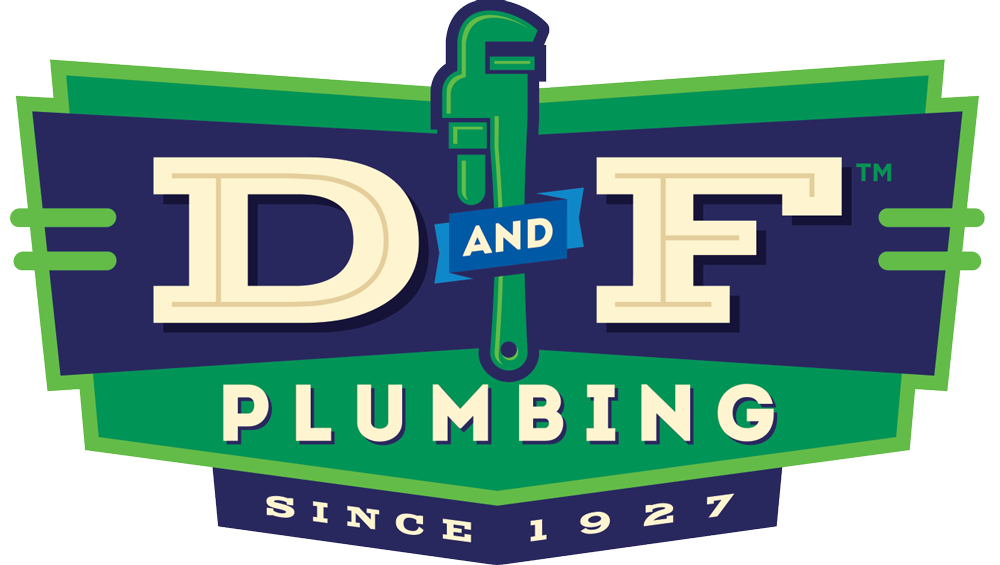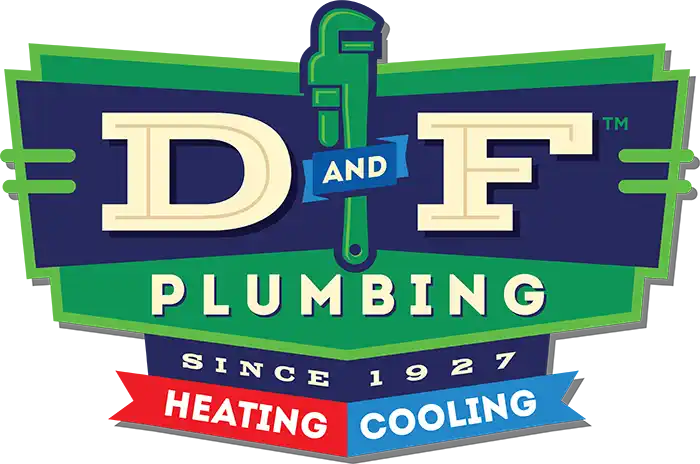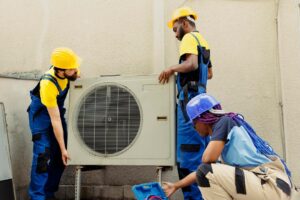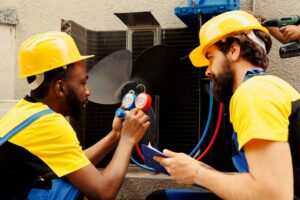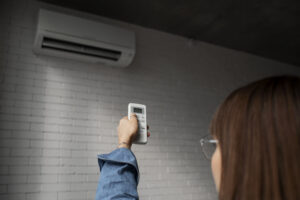Washington State has seen an increase in devastating wildfires in recent years, scorching vast areas and blanketing the region in smoke. If you’re a homeowner in the greater Vancouver, WA area, safeguarding your home and loved ones from the smoke and ashes of these wildfires is of utmost importance.
As flames rage and smoke engulfs the landscape, the air we breathe becomes a crucial battleground for our health. Here are some valuable insights from the experts at D&F Plumbing, Heating, and Cooling on how to effectively monitor and enhance your indoor air quality during the 2023 Washington fire season.
Understanding the Impact of Washington Wildfires
Washington State’s wildfire history is marred by a legacy of destruction. In fact, the state has experienced several devastating wildfires throughout its recorded history.
The Big Burn of 1910 stands as a haunting testament, where an unprecedented blaze consumed a staggering 3 million acres of land in Washington, Montana, and Idaho in a mere 36 hours. More recently, the 2015 wildfire season holds the unfortunate title of being the largest in Washington State history, scorching over one million acres across the state from June to September.
As homeowners in the greater Vancouver, WA area, it’s crucial to understand the implications of Washington wildfires. While we may not experience a catastrophe of the same magnitude as the Big Burn or the 2015 wildfire season this year, the threat of wildfires remains a real concern.
The effects of wildfires stretch beyond the immediate loss of homes and forests. They cast a long shadow over air quality and public health.
Microscopic particles and gasses released during these blazes can travel thousands of miles, leading to concerns about air pollution and indoor air quality (IAQ).
As the smoke from wildfires infiltrates our homes and workplaces, monitoring Washington air pollution levels becomes crucial to stay informed about the severity of your situation.
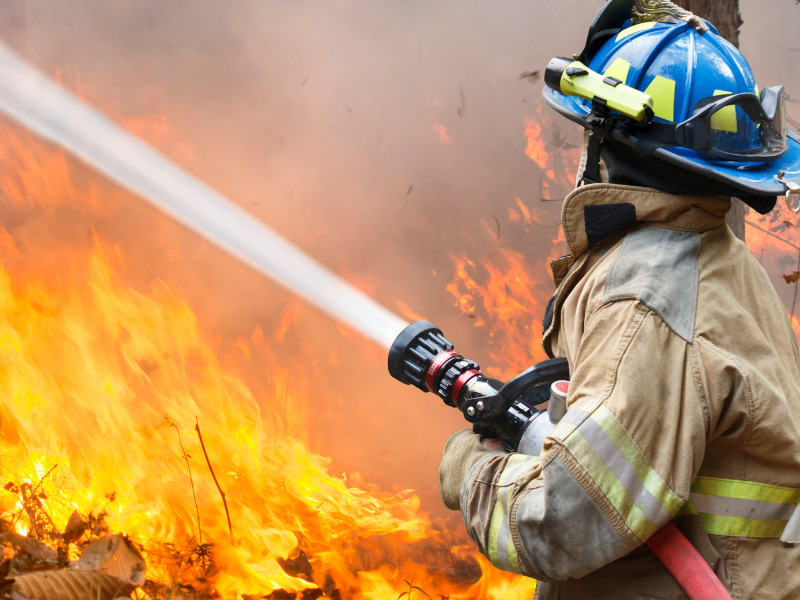
Monitoring Air Quality: Real-time Washington Wildfire Maps
During the 2023 Washington wildfires, staying informed about the current fire situation is essential for safeguarding indoor air quality. If you’re wondering where the smoke in Washington is coming from, real-time Washington wildfire maps like this one serve as invaluable resources. They’ll provide you with up-to-date information on wildfire locations and intensity.
By using these maps, you can gather important information that will help you make smart choices to keep your family safe and minimize the effects of smoke and pollutants inside your home.
Don’t worry, accessing and understanding these maps is easy:
- Visit the Washington State Department of Natural Resources (DNR) official website or the DNR Twitter regularly for real-time updates and interactive maps.
- Keep an eye on active wildfires, fire perimeters, and progression to understand the immediate threats.
- Check the air quality index (AQI) data on Washington’s Department of Ecology website here to assess the level of air pollution and smoke impact in your area.
Understanding the Washington State Air Quality Map
The Air Quality Index (AQI) is a vital tool that helps homeowners gauge the level of air pollutants in their area. Ranging from 0 to 500, the AQI provides a color-coded scale that indicates the concentration level of pollutants, with higher readings indicating greater health risks.
The Washington State Air Quality Map here offers a comprehensive overview of air quality levels in the greater Vancouver, WA area and beyond. By referring to this map, homeowners can quickly assess the air quality status in their vicinity.
The map is color-coded into six main categories, each associated with a specific AQI number:
- Good (AQI 0-50): Air Quality is satisfactory and poses no significant health risk to Washington residents.
- Moderate (AQI 51-100): Air Pollution could potentially affect individuals with sensitive respiratory systems.
- Unhealthy for Sensitive Groups (AQI 101-150): People in vulnerable groups may experience more pronounced health effects.
- Unhealthy (AQI 151-200): Individuals with heart and/or lung conditions are advised to limit outdoor activities.
- Very Unhealthy (AQI 201-300): It’s recommended that everyone should avoid any physical exertion outdoors.
- Hazardous (AQI 301-500+): All Washington residents are strongly urged to remain indoors and minimize activities.
In recent years, Washington State has witnessed an increase in the frequency of wildfires, leading to elevated AQI readings.
With the threat of wildfires and the impact they have on air quality, it’s important to prioritize the health and safety of your household. Be vigilant and follow any health advisories provided by local and state authorities, as well as the guidance from medical experts who can assess the unique risk factors in our region.
Impact of Oregon Wildfires and Neighboring States on Washington
Wildfires in Oregon and neighboring states can have significant implications for Washington, particularly when it comes to air quality and the potential spread of fires. Here’s how these fires can impact Washington:
- Smoke Drift: Smoke from Oregon fires can travel northward, affecting air quality in Washington and potentially leading to breathing difficulties and respiratory health issues.
- Fire Spreading: If wildfires in neighboring states are not contained, there is a risk of fire spread into Washington, posing a direct threat to homes and communities.
- Shared Resources: During fire seasons, firefighting resources and personnel may be shared among states, which could impact the availability of resources to combat fires in Washington.
It’s crucial for homeowners in the greater Vancouver, WA area to stay informed about the status of fires in Oregon and neighboring states, as well as the prevailing wind patterns. You can explore Oregon’s wildfire tracker here.
This awareness can help in preparing for potential smoke impacts and taking necessary precautions to protect indoor air quality and ensure the safety of their homes.
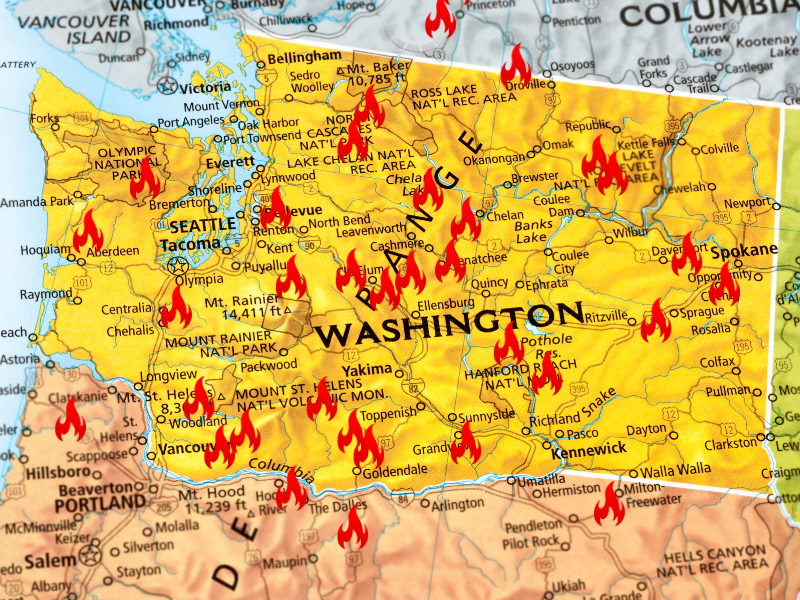
Health Effects of Wildfire Smoke: Protecting Respiratory Health in Washington State
Do you have family members who suffer from asthma, allergies, or other respiratory ailments? Do you have children, elderly adults, or someone who’s pregnant living in your home?
These vulnerable populations are particularly at risk when it comes to wildfire smoke in Washington state. But the health risks associated with inhaling smoke particles and gasses released by Washington wildfires can affect anyone.
Let’s delve into the health problems and risks linked to wildfire smoke in Washington:
Respiratory Irritation
Wildfire smoke in Washington contains tiny particles called PM2.5, which irritates the respiratory system and can cause symptoms like coughing, wheezing, and shortness of breath.
The American Lung Association has found that when we breathe in PM2.5 particles from wildfire smoke, it raises the chances of having respiratory problems and makes existing conditions like asthma and chronic obstructive pulmonary disease (COPD) worse. So it’s important to be mindful of these tiny particles and take steps to protect our respiratory health during Washington’s fire season.
Increased Risk of Respiratory Infections
Inhaling smoke particles weakens the immune system, making individuals more susceptible to respiratory infections. Studies have found a connection between wildfire smoke exposure and higher hospital admissions for respiratory issues, including pneumonia and bronchitis.
Elevated Cardiovascular Risks
Washington wildfire smoke contains harmful gasses and chemicals like carbon monoxide and volatile organic compounds (VOCs), which can enter the bloodstream. Long-term exposure to these pollutants has been associated with an increased risk of:
- Cardiovascular problems (including heart attacks and strokes)
- Higher risk of blood clots
- Reduced lung function
- Allergic reactions
- Cancer
Long-term Health Effects
In Washington, wildfire season usually kicks off in May and wraps up around October. That’s a good six months of the year when you might find yourself breathing in wildfire smoke. And here’s the thing: being exposed to it for a long time can seriously affect your health in the long run.
Studies have shown that breathing in the fine particles from Washington wildfires over an extended period might increase the risk of developing chronic respiratory diseases. In fact, it could even shorten your life expectancy.
Now, more than ever, it’s crucial to pay attention to the air quality during the fire season. With the ongoing Covid-19 pandemic and the health challenges it has brought, improving your indoor air quality becomes even more important.
Improving Indoor Air Quality: Air Purifiers and Filtration
Think back to some of the worst wildfires in our state. The acrid scent of smoke fills your home. Your loved ones struggle to breathe amidst the haze, their coughs echoing through your home. Eyes stinging from the pollution.
The coughing, wheezing, and burning are a constant reminder of the perilous air quality brought on by the conditions outside.
Is there a solution to shield your family’s health and comfort from this smokey menace?
When it comes to indoor air quality, it’s not just a matter of luxury; it’s a matter of necessity, particularly during these challenging wildfire events.
The insidious smoke particles and pollutants infiltrating your home pose significant health risks to your family. Fortunately, there is hope — air purifiers and filtration systems can serve as your family’s lifeline, providing a shield against the relentless onslaught of wildfire smoke.
Let’s explore your best options:
HEPA Filters: Filtering Out Smoke Particles
When it comes to capturing smoke particles and other allergens, High-Efficiency Particulate Air (HEPA) filters are the gold standard. These filters can trap a remarkable 99.97% of airborne particulates as small as 0.3 microns.
They’re widely used in medical centers and science labs due to their exceptional filtration capabilities. However, it’s important to note that not all heating and cooling systems are compatible with HEPA filters.
Attempting to install one without proper system support can lead to decreased efficiency, insufficient airflow, and higher utility costs.
Air Purifiers: Minimizing the Threats
Air purifiers offer a powerful solution to combat invisible threats and maintain clean and safe indoor air quality. With advanced technology and innovative designs, these systems effectively capture and trap smoke particles and pollutants.
Consider the following options:
- HEPA Filters: Air purifiers equipped with HEPA technology can effectively remove fine particles, including smoke, pollen, and pet dander. This makes them beneficial not only during wildfires but also for relieving seasonal allergies and pet-related irritants.
- Activated Carbon Filters: These filters neutralize odors and capture chemicals present in smoke, providing additional purification. They also tackle other environmental threats like mold spores, bacteria, and volatile organic compounds (VOCs) from cleaning products and paint.
- UV-C Light Systems: By utilizing ultraviolet light, these systems neutralize airborne pathogens, reducing the risk of respiratory infections. They’re particularly useful outside of wildfire season when bacteria and viruses can be easily spread indoors. Consider UV-C light systems if your home is prone to airborne illnesses during the fall and winter months.
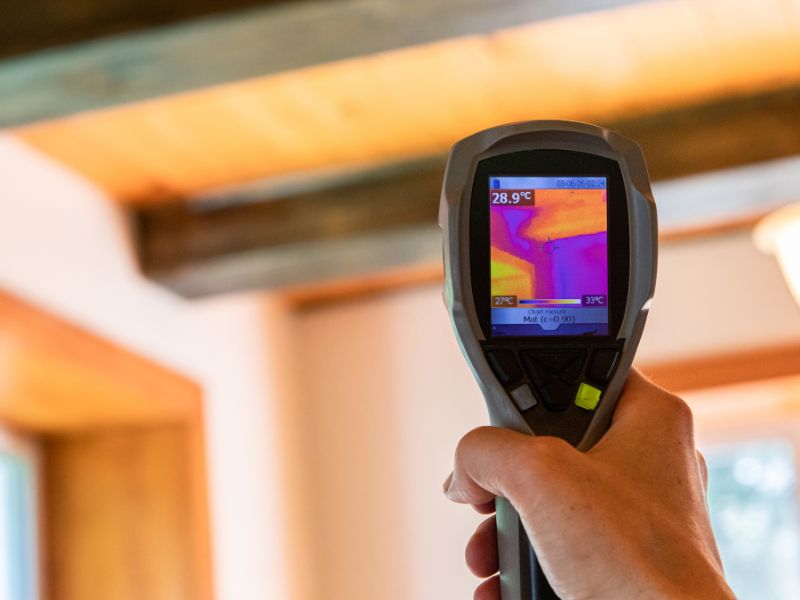
Whole-Home Air Purification: Total Protection for Your Home
If you want comprehensive protection from wildfire smoke and other airborne irritants like seasonal allergies and the flu, a whole-home air purification system is the best solution.
These systems work in harmony with your Heating, Ventilation, and Air Conditioning (HVAC) system to continuously purify the air throughout your entire home. Here are the options to consider:
- Whole-Home Air Purifiers: These systems attach directly to your HVAC system, purifying the air as it circulates throughout your home. They provide comprehensive coverage and are highly effective in maintaining clean indoor air quality.
- Ventilation Systems: By bringing in fresh outdoor air while filtering out pollutants, ventilation systems maintain a healthy balance between indoor and outdoor air. They contribute to creating a healthier indoor environment.
- Air Exchangers: These systems replace stale indoor air with fresh outdoor air, effectively diluting smoke particles and maintaining optimal indoor air quality.
At D&F Plumbing, Heating and Cooling, we understand the importance of clean indoor air, especially during wildfire season. Our Plaid Pros can seamlessly integrate these systems into your home, ensuring that every room is protected.
Don’t overlook the significance of investing in air purification or filtration systems for your home. The cost of not safeguarding your indoor air quality can be far greater than the cost of installation.
Improving Indoor Air Quality in Washington State: Ventilation Techniques
When you think of Washington, you probably envision our lush green landscapes and breathtaking scenery. But wildfires can paint a vastly different picture outside, in your home, and in your lungs…
Maintaining fresh indoor air is crucial, especially during these times when smoke and poor air quality prevail. While we all enjoy a refreshing breeze, it’s important to keep our windows closed to prevent harmful pollutants from entering our homes during fires.
But surprisingly – even under normal conditions – the air inside our homes can be more polluted than the air outside. According to the Environmental Protection Agency (EPA), indoor air pollutants can reach levels 2 to 5 times higher than outdoor levels, sometimes exceeding 100 times more!
Various sources contribute to household air pollution:
- Cleaning products
- Paints
- Building materials
- Cooking.
That’s why it’s vital to prioritize the maintenance of your indoor air quality, whether or not a fire is raging outside. Indoor air quality greatly depends on the air circulation within your home.
Make Use of Natural Ventilation
Consider the following ventilation strategies to circulate your indoor air and keep it fresh and clean:
- Utilize exhaust fans: In your kitchens and bathrooms, make use of exhaust fans to expel stale air and pollutants directly outside. This prevents them from lingering and negatively impacting your indoor air quality.
- Consider portable air purifiers: Investing in small, portable air purifiers with effective particle filtration systems can make a significant difference in reducing smoke particles and other pollutants in parts of your home. Look for models that are specifically designed to handle wildfire smoke, and choose one that suits the size of your living space.
- Maintain your HVAC system: Regular maintenance of your heating, ventilation, and air conditioning (HVAC) system is crucial. Ensure that your filters are clean and replace them as recommended by the manufacturer. This will help optimize filtration and ventilation, safeguarding your indoor air quality.
- Bring the outdoors in with indoor plants: Enhance your indoor air quality by incorporating certain houseplants into your home decor. Spider plants, peace lilies, and snake plants are known to naturally filter out pollutants. Not only do they add a touch of greenery to your space, but they also contribute to cleaner indoor air.
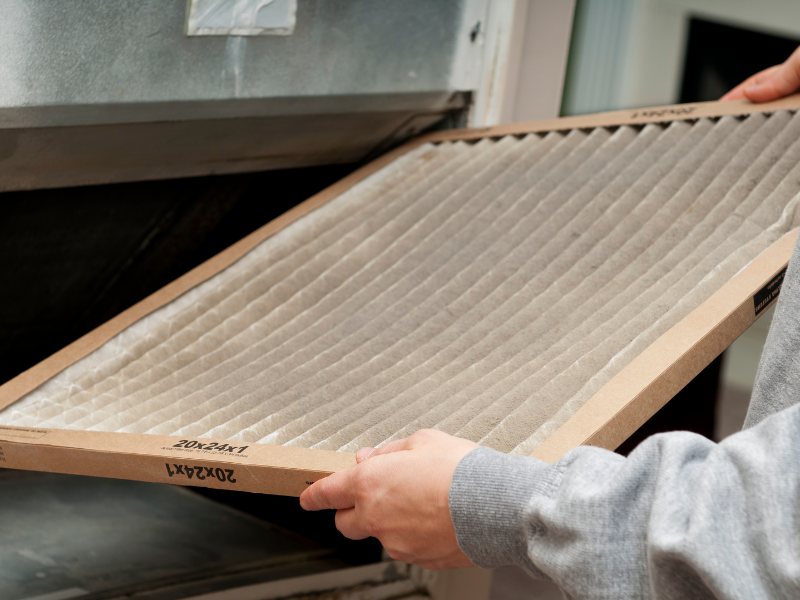
HVAC Maintenance
In addition to natural ventilation, maintaining an efficient HVAC system is crucial for ensuring proper air circulation in your Washington home. Here are some key steps to keep in mind:
- Annual maintenance for your heater and air conditioner: Make sure to schedule regular inspections and filter changes for your HVAC system (we recommend at least once per year). Opt for high-efficiency filters like those rated MERV 13 or higher, as they are effective in capturing smoke particles and other pollutants that may be present during Washington wildfires.
- Whole-house ventilation options: Consider installing a whole-house ventilation system, such as a heat recovery ventilator (HRV) or an energy recovery ventilator (ERV). These systems exchange stale indoor air with fresh outdoor air while minimizing energy loss. They also incorporate filtration, which helps reduce the entry of smoke particles into your home.
- Strategic use of portable air purifiers: If you can’t invest in whole-house air purifier installation, place smaller, portable air purifiers equipped with HEPA filters in rooms that are frequently used by your family. This helps filter out smoke particles and enhance the air quality in specific areas of your home.
As Washington burns and smoke creeps into our neighborhoods, proper ventilation is the lifeline that ensures your family breathes easier. By following these simple steps, you can protect your respiratory health and create a better indoor environment, even during a wildfire.
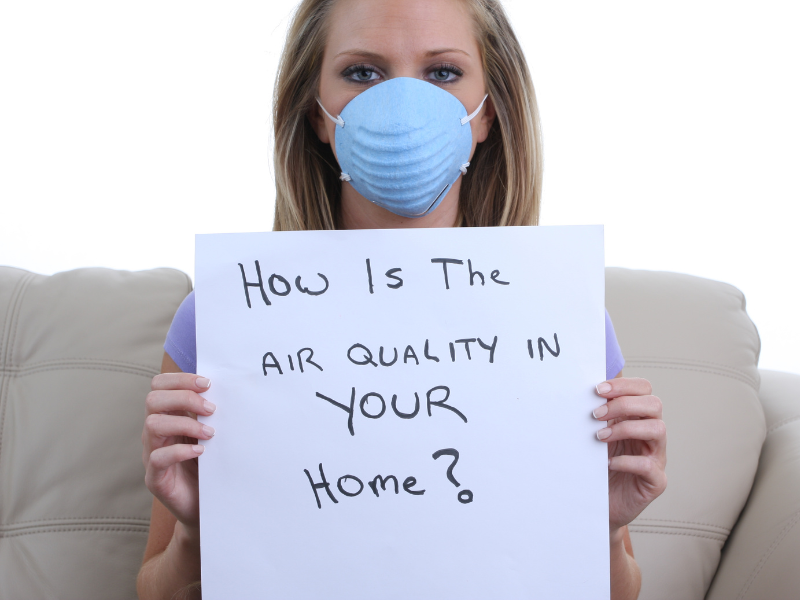
HVAC Maintenance and Your Indoor Air Quality
Smokey toxins lurk within the very air you breathe during a wildfire, and your family’s well-being hangs in the balance. You may not realize it, but the battleground for clean indoor air lies within your HVAC system’s current condition.
Over time, dust, dirt, and other contaminants can accumulate within the system, compromising its efficiency and the quality of the air it circulates.
Regular maintenance of your HVAC system is key to improving indoor air quality and protecting your family’s respiratory health.
Here are three areas of your HVAC system that require special attention:
- Air Filter Replacement: One of the easiest and most important maintenance tasks is regularly changing your HVAC system’s air filters. High-quality filters are effective in capturing smoke particles and other pollutants caused by Washington wildfires. Follow the manufacturer’s guidelines for filter replacement frequency. In general, changing your filter once per season will help keep your system clean and your indoor air quality high.
- System Inspection: Reduced performance or a breakdown means your HVAC system is not working properly, putting the air quality in your home at risk. Schedule a professional inspection at least once a year, or more often if you have noticed reduced performance. During the inspection, components such as coils, fans, motors, and electrical connections will be cleaned, ensuring optimal performance and reducing the risk of costly repairs during the wildfire season.
- Duct Cleaning: Over time, dust, debris, and even mold can accumulate in your HVAC system’s ductwork, affecting the quality of the air circulating in your home. Professional duct cleaning is essential to remove these contaminants and ensure that clean air flows through your living spaces.
Need AC or heater maintenance in Vancouver, WA or other surrounding areas? Click here.
Indoor Air Quality Services Near Me
We’ve got you covered when it comes to indoor air quality services in Vancouver, WA and surrounding areas. With the threat of Washington wildfires in 2023, it’s crucial to take action and protect your home from the harmful effects of smoke, ash, and poor air quality.
At D&F Plumbing, Heating and Cooling, we’re your trusted provider of indoor air quality services. Our skilled technicians are ready to assist you with the:
- Choosing the right HVAC, ventilation, and filtration systems that suit your specific needs.
- Thoroughly inspecting and cleaning your existing system to ensure optimal performance.
- Replacing air filters to improve filtration efficiency.
- Installing whole-house ventilation systems to enhance fresh air circulation.
- Providing expert recommendations to maintain air quality and reduce the presence of smoke particles in your home.
Since 1927, D&F Plumbing, Heating and Cooling has been dedicated to serving homeowners in the Vancouver, WA area. Our Plaid Pros are eager to bring you peace of mind during times when smoke from Washington wildfires fills the air.
Your indoor air quality and safety are our top priorities. Fill out the form below to learn how our services can help protect your home.
